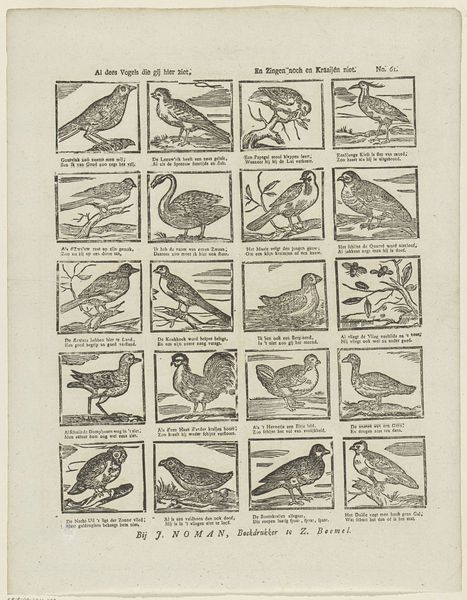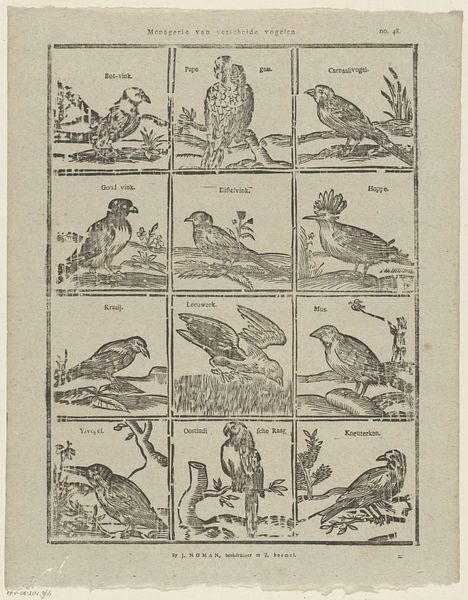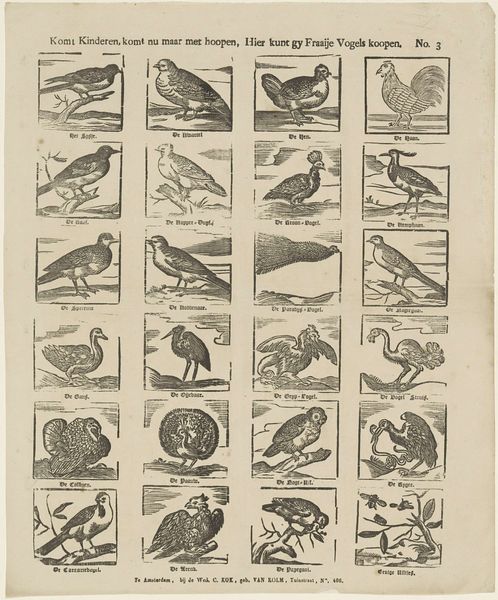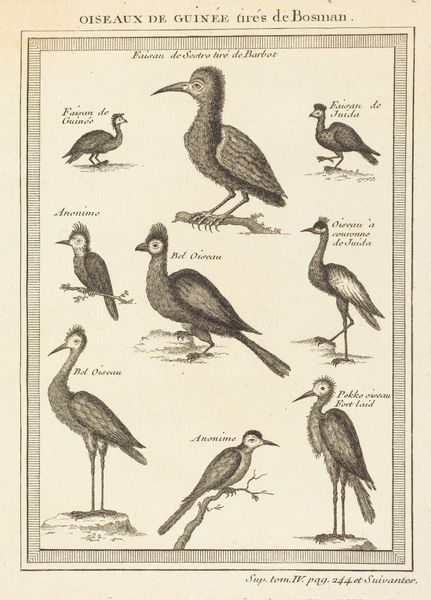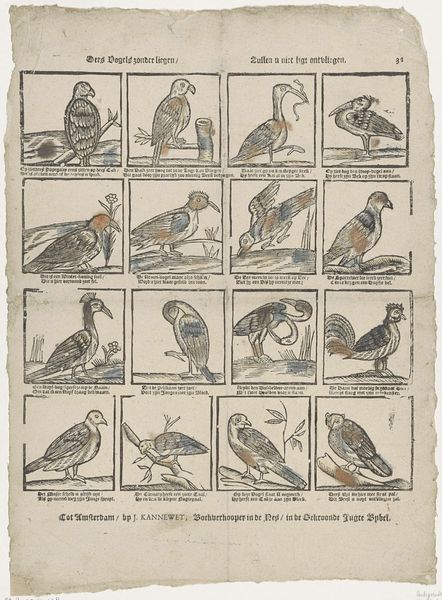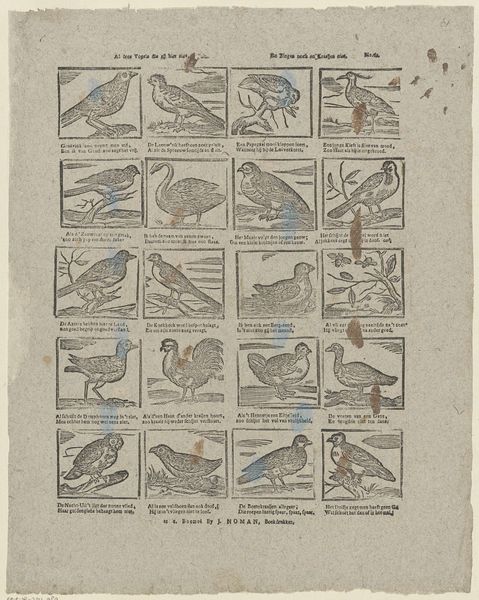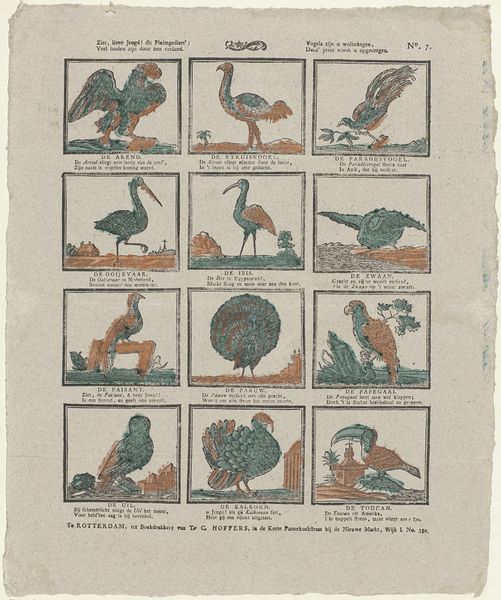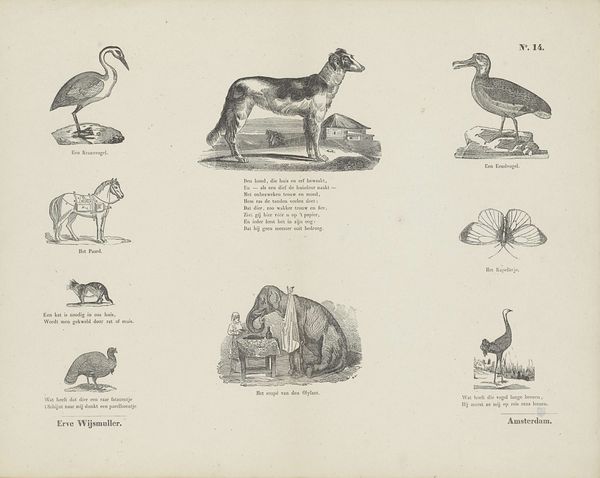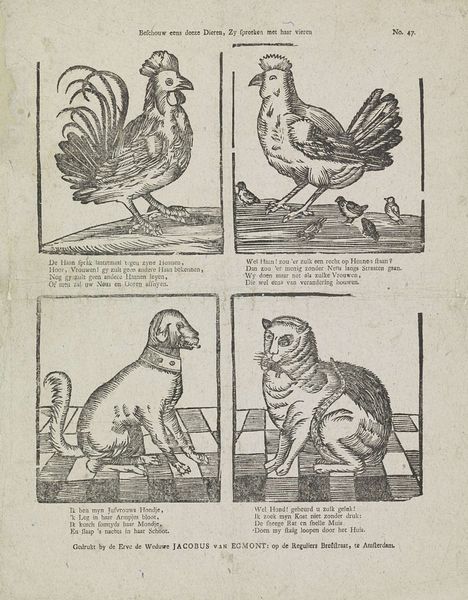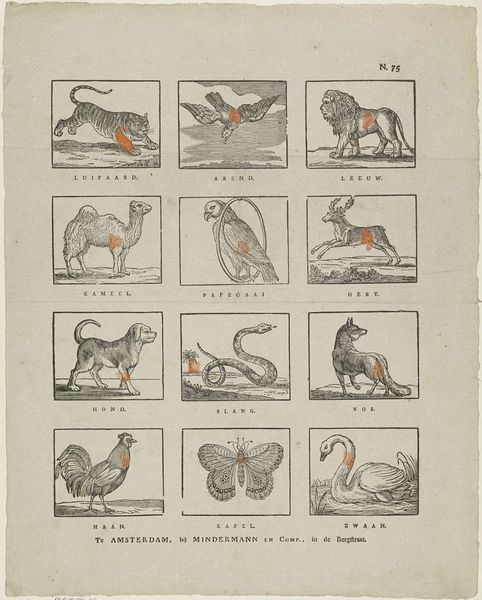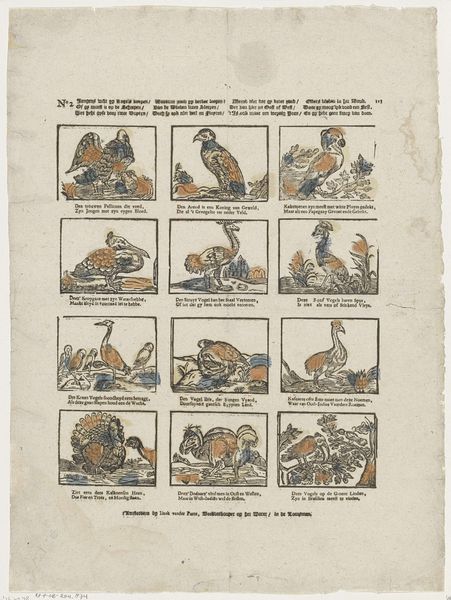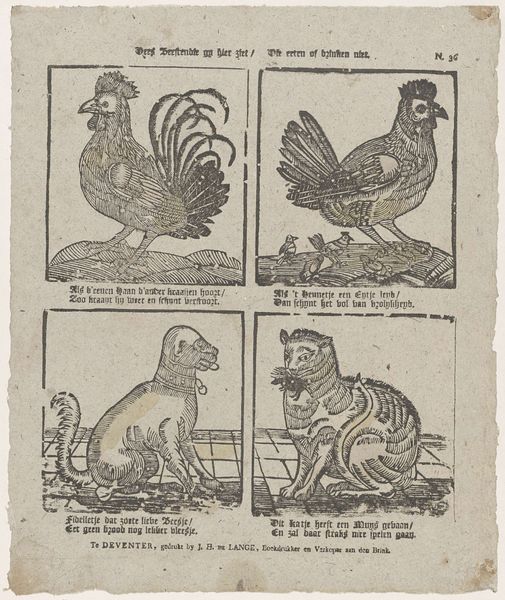
Daar jongens, meisjens, hebt ge een print, Waar op gij keur van voglen vindt 1805 - 1808
0:00
0:00
drawing, graphic-art, print, etching, engraving
#
drawing
#
graphic-art
# print
#
etching
#
bird
#
genre-painting
#
engraving
#
realism
Dimensions: height 411 mm, width 324 mm
Copyright: Rijks Museum: Open Domain
Curator: Isn’t it fascinating how prints can be like little encyclopedias? This one by Johannes Bouwer, dating back to somewhere between 1805 and 1808, titled "Daar jongens, meisjens, hebt ge een print, Waar op gij keur van voglen vindt" translates to "There boys, girls, you have a print, where you will find a selection of birds." Editor: Oh, immediately striking! It has a real quaint charm. Sort of a simplified field guide—all those birds rendered so neatly in their little boxes, like a feathered version of the periodic table. Do you think that clarity served some other, symbolic purpose? Curator: Precisely! These birds aren’t just representations, they’re visual shorthands. The eagle signifies power, the swan, grace. And don’t forget how prints like these made knowledge accessible. Each bird comes with its own descriptive little verse, furthering a deeper cultural understanding. Editor: Absolutely. They really did create, in essence, portable ecosystems! Take the owl for example, a classic symbol of wisdom... or even of impending death, depending on who you asked. It really brings home how deeply interwoven visual culture was within folklore. Curator: Indeed! And consider the rooster, the last bird. Its presence speaks volumes about Dutch rural life, and even about values of vigilance and community. The print, an etching and engraving on paper now resting at the Rijksmuseum, transforms the humble barnyard fowl into something of civic importance! Editor: It certainly brings together an age that deeply honored its connection with both nature and knowledge—offering more than mere aesthetics! These weren't just pretty birds but resonant figures. Each had a purpose beyond ornithology, didn't it? Curator: Absolutely. It’s the layering of information, folklore, and social values that make it so enduring. Editor: You are right, Johannes Bouwer was more than an artist. A thoughtful visual interpreter for sure!
Comments
No comments
Be the first to comment and join the conversation on the ultimate creative platform.

